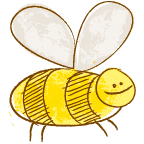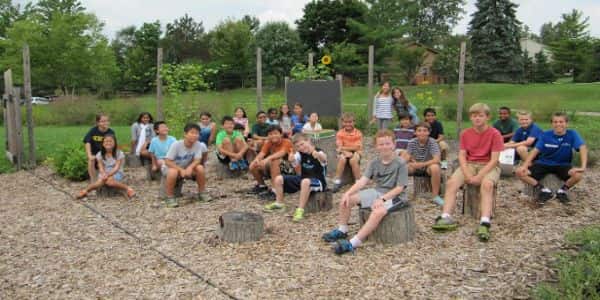Teachers and staff at Martin Luther King Elementary School in Ann Arbor, Michigan, needed to solve a playground problem: standing water.
A school garden proved to be the perfect solution. Water from the playground’s drainage system was accumulating in a few areas, which created a slick, icy hazard during winter, and unsafe, mosquito-breeding pools during summer.
In 2012, the school received funding to create a school garden, including an edible garden and a shed with a living roof. They also had the bright idea to add a pollinator rain garden in one of the drainage locations to utilize the water that was already collecting, while also increasing biodiversity on the property by attracting more bees and other pollinators.
Many Goals, One Garden
As the name implies, a pollinator garden is designed with specific plants to attract more pollinators, including bees, butterflies and birds. A rain garden is designed to take special advantage of rainfall or water runoff, usually by placing the garden where water already collects and by choosing plants that thrive with high moisture.
Fifth graders took on MLK’s first combination pollinator rain garden as their legacy project in 2012. The students handled all the research and much of the installation themselves.
It proved such a success for addressing standing water and attracting more bees and other pollinators—as well as supporting the academic curriculum—the school added a second similar garden two years later.
These gardens also support the rest of MLK’s school garden program, which includes a larger garden that produces edible plants. Pollinators play a critical role in growing food. When more pollinators visit an area, this typically leads to an overall increase in the health of the area’s ecosystem, improves the general health of all surrounding gardens, provides natural pest control and increases yield of vegetables, fruits and flowers too.
Bringing the Buzz into the Classroom
Students at MLK now enjoy more opportunities to observe bees and other pollinators outdoors, and the pollinator rain gardens support many lessons in the classroom for science, math, reading and writing at all grade levels.
Key subject areas for each grade include:
- Kindergarten—collect and study dirt, sand and water samples
- 1st grade—collect and examine living things, animals, plants and fungi
- 2nd grade—life cycles humans, wildlife, plants, bees and butterflies
- 3rd grade—habitats of plants and animals, biomes, our sun and the solar system
- 4th grade—nature’s “recyclers” and the watery Earth
- 5th grade—energy and energy transfer
“Our students learn why it is beneficial to conserve, create and enhance biodiversity,” explains Fifth Grade Teacher Neha Shah. “These gardens conserve water, improve water quality on our site and help to recharge our local groundwater. Students also see how pollinator plants increase beneficial insects, which eliminate pests; create habitat for birds and butterflies; help increase the bee population and pollinating success.”
It’s a full circle right in their own backyard—and for kids in every grade, these big-picture biodiversity lessons can profoundly influence their attitudes, and actions, toward the natural world.
Invite more pollinators to your playground and find out if a rain garden is right for your site:
- Research native plants that attract bees, birds and butterflies in your area. (Choose plants that resist deer or other wildlife in your area, if applicable.)
- Take advantage of drainage runoff on your site. Learn more about how to design a rain garden.
- Contact the local water resource office for assistance to get help doing a water/land assessment. Find out how much impermeable surface you have and how much permeable surface you need to match.
- Learn more about honeybees and consider adding a hive to your school garden.
- Build community partnerships with local master gardeners and other individuals who have a vested interest in promoting water conservation and biodiversity.
- Visit and build relationships with nearby botanical gardens, native plant nurseries and other organizations, businesses or garden clubs.
- Keep a logbook to track what you have planted and to record observations of increasing biodiversity.



